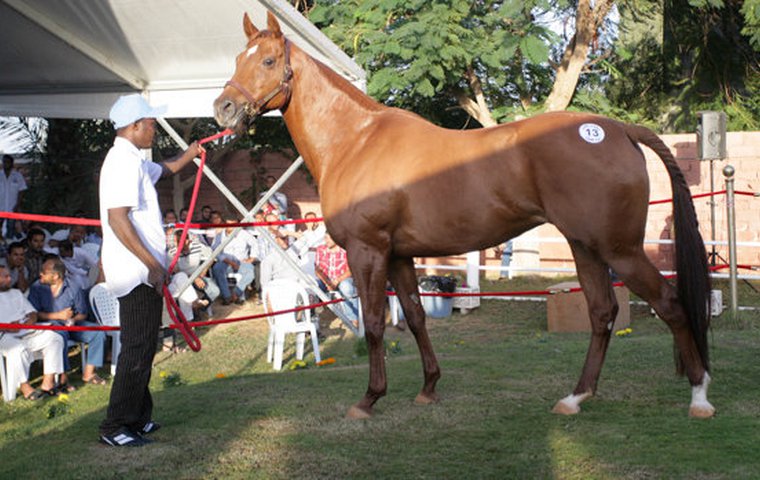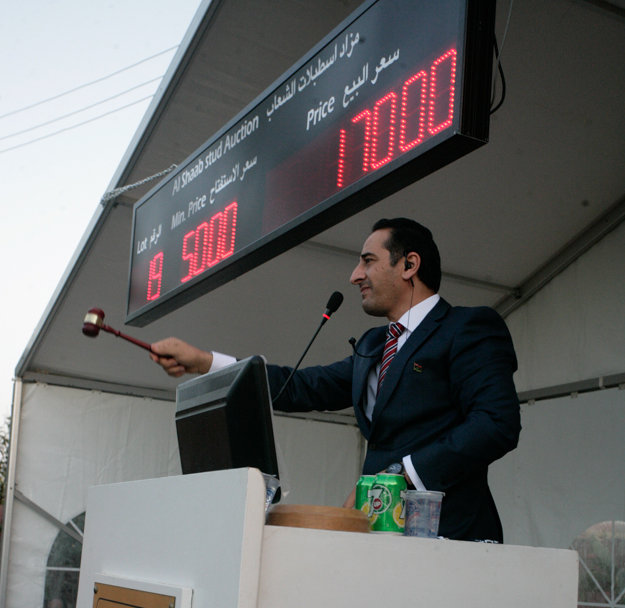
January 9, 2020, note: With the horrific news from Libya this week, it’s worth bearing in mind how racing and breeding there had already been rebuilt after the Gaddafi era. The signs were very promising, as this report from Lissa Oliver showed six years ago ...
The once burgeoning Libyan racing industry was suppressed and virtually destroyed early in Colonel Gaddafi’s 42-year rule. Less than three years after the dictator was overthrown in a bloody civil war, it is regenerating at incredible speed. Despite political and logistical problems – and even death threats, it has impressive ambitions, including the reintroduction of a Libyan Breeders’ Cup in April.
Before Libya could be regarded as a proper racing nation, there was the small matter of the stud book. The first one, established in 1959, was removed from the control of the Ministry of Agriculture when Gaddafi came to power in 1969 and was given to the military in 1972. And that, basically, was the end of that.
Then, 10 years ago, a handful of Libyan breeders took the first tentative steps toward resurrecting their racing industry by importing a few horses from abroad and quietly holding low-key sales at Dr. Amad and Radwan Al Shaab’s stud on the outskirts of Tripoli.
Sales were held twice a year and, as the reintroduction of Thoroughbreds grew, unofficial race meetings began to take place. All activity stopped during the revolution of 2011, but once Gaddafi was overthrown, the rebirth started in earnest.
Read part 1 on the remarkable rebirth of racing in Libya
Libya moved ever closer to international recognition when the Ministry of Agriculture approved a new stud book in November 2012.
“Before the stud book was created, we were very limited in the racing world since we were not able to register our locally born Thoroughbreds,” explained Ahmed Lamine, a co-founder of the Libyan Horsemen’s Association, which was formed two weeks after Gaddafi’s death in October 2011. “We were not able to take them to compete internationally, auction off, or breed in an official capacity.”
The then Minister of Agriculture, Suliaman Bukharuba, in approving a £5 million ($8.34 million) funding for the Thoroughbred industry, confirmed: “We aspire to have a standard so high that, instead of Libyans going out to train and race, we want to invite other nations to come here.”
Since then, there have been several changes in government, the unsteady political situation posing the biggest difficulty to those trying to establish horse racing on an international basis. Bukharuba has already been replaced twice, with a fourth Minister of Agriculture about to be appointed at the time of writing. While pockets of anti-democratic militia are still to be found in one area of Libya, in general the international news reports of the political situation are generalising about the “instability” of Congress, where specifically the problems lie in the lengthy “settling in” process and the transition to democracy.
Feb. 17 saw the third anniversary of the revolution, and any problems were forgotten as people took to the streets and united in celebration. Most cited the failures in government as being due to the poor performance of the General National Congress.
“All the problems we are facing at the moment are because political parties were established too soon,” political activist Adel Al-Hadi Al-Mshairqi told the Libya Herald.
Despite such problems, horse racing has pressed ahead and flourished. Last October saw another important step forward when Prime Minister Ali Zaidan signed his approval for the establishment of the Libyan Horseracing Authority (LHA).

Dr. Amad Al Shaab says that every city in Libya has a racecourse and race meetings are held every Friday, but they are still in the process of establishing the full jurisdiction of the LHA over individual racecourses. At present, average attendances at race meetings are a healthy 6,000, and 8-12 horses compete for every prize. Although largely Thoroughbred, Arab races are included on the cards. Betting has never been allowed in the country.
“We are waiting on the 2014 budget granted to the LHA,” Dr. Al Shaab explained. “At the moment we are still operating on the small support we receive from the Ministry of Agriculture until the monies come through from the state budget itself.”
In the meantime, the LHA has secured major sponsorship from the capital of Tripoli itself and €600,000 ($821,000) will be spent on the first major race to be held at Tripoli’s Abu Sittah racecourse, enabling the LHA to invite international guests and prominent delegates from the racing world.
These guests will include all the members of the European and Mediterranean Horseracing Federation (EMHF). Following the LHA’s ratification, it was granted acceptance as a full member of the EMHF at that authority’s General Assembly, which took place in Casablanca, Morocco, on Feb. 1. The welcoming of the LHA was received with a warm round of applause.
Brian Kavanagh, EMHF Chairman, said: “I am delighted that the growing value and relevance of the EMHF to emerging racing nations in the Euro-Med region has been demonstrated by the level of demand to join the federation. I am sure that Azerbaijan, the Channel Islands, Libya, and Portugal – four countries with very different profiles – will bring a fresh richness to the EMHF and the EMHF, in turn, is committed to helping in the development of their racing industries.”
This huge step forward could not be more timely ahead of the scheduled resumption of the Libyan Breeders’ Cup after a gap of more than 40 years since it was suspended by Gaddafi in 1972. The meeting will be held at Abu Sittah racetrack in Tripoli in April, although an exact date has yet to be confirmed owing to the delay in the importation of starting stalls from Australia. With prize money of more than $80,000 per race, the breeder-sponsored races will feature a 1,200 metre race for two-year-olds, a 1,600 metre event for three-year-olds and up, and a 2,000 metre race for three-year-olds and up.
With the industry progressing rapidly, one can’t help but feel optimistic for the ambitious plans of the LHA.
“The main problem is the political situation. It changes all the time,” admitted Dr. Amad Al Shaab, who last year established associations for jockeys and trainers. “Once again we are facing a change of Prime Minister and new ministers. You have to explain the importance of the Thoroughbred industry to every new minister and we are about to go through that same process again with the fourth Minister of Agriculture. Although they have all been supportive, it is still very difficult to keep going with continuous work, due to the changes.”
What we are privileged to be watching in Libya at the present time is not just the re-birth of a racing nation, with all its accompanying teething problems, ambitions, education, and optimism, but the bright new dawn of an Arab country, just 20 minutes from the coast of Malta, 40 minutes from the coast of Italy, and populated by people for whom horses are written into their holy text as “a gift from God.”


